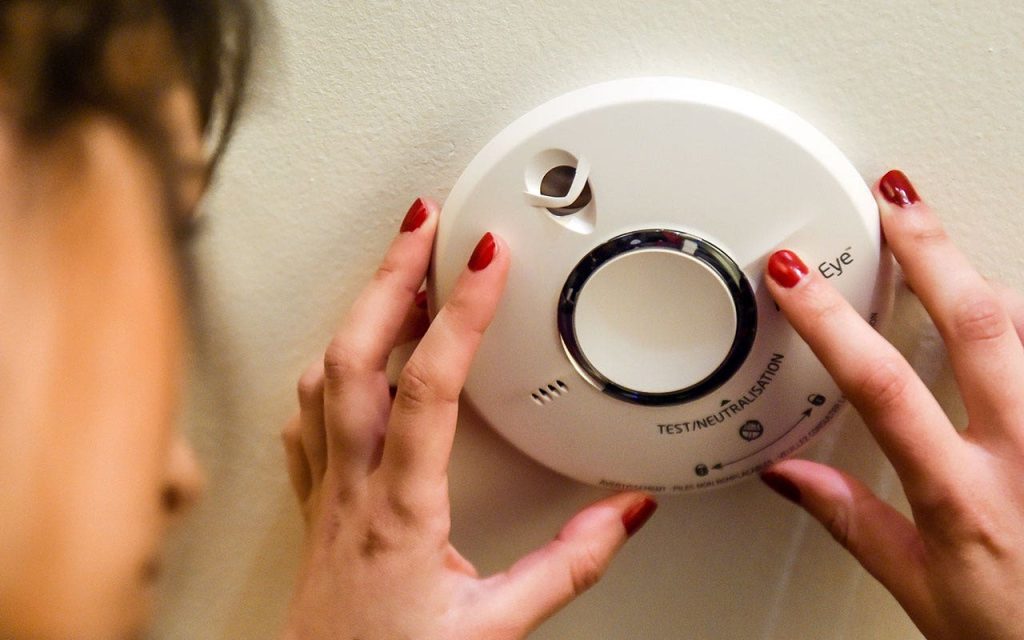Regularly maintaining home devices is crucial for ensuring personal safety and peace of mind for yourself and your loved ones. Neglecting to routinely check devices such as smoke and carbon monoxide detectors can be hazardous, regardless of whether you are a homeowner, renter, or just temporarily staying in a space. In this article, we will discuss the best practices for inspecting five key devices in your home: smoke and carbon monoxide detectors, electrical outlets, drying machine lint trap, heating and cooling system, and gas stove. By following these recommendations, you can mitigate potential risks to your household and protect your property and loved ones.
Smoke and carbon monoxide detectors should be checked regularly for battery replacement to ensure they are functioning properly. Jason Patton, a firefighter and paramedic, advises changing the batteries every six months or whenever the clocks change for Daylight Savings Time. It is also recommended to replace smoke and carbon monoxide detectors every 7 to 10 years to maintain their effectiveness. Dead or missing batteries can render the devices useless in the event of a fire, so proactive measures are essential for early detection of fires and protecting lives.
Maintaining the safety and functionality of electrical outlets is vital for a secure home environment. Austin Jenkins, a certified master inspector, recommends watching out for arcing marks on the faceplate or a humming sound, which may indicate potential issues that require professional attention. Regular inspection and maintenance of electrical outlets can help prevent hazards such as electrical fires or shocks, ensuring the safety of your home and occupants.
Cleaning the lint trap in your dryer is crucial for preventing fire hazards. Jason Patton advises cleaning the lint trap every time you put a new load of laundry in the dryer and having the dryer vent cleaned every 1 to 3 years. Lint buildup in the dryer trap and exhaust ducts can obstruct airflow, leading to overheating and potential fires. By maintaining a clean lint trap and exhaust system, you can reduce the risk of dryer-related fires and ensure optimal performance.
Regular servicing of your home’s heating and cooling systems is essential for maintaining their efficiency and prolonging their lifespan. It is recommended to schedule professional maintenance at least once a year to identify and address any potential hazards promptly. This can help improve air quality, increase energy efficiency, and reduce the risk of unexpected breakdowns, providing homeowners with peace of mind and comfort throughout the year.
Gas stoves should be periodically inspected for gas leaks, burner malfunctions, and signs of wear and tear. Keeping the burners and gas lines clean and free from debris is essential to ensure proper functioning and safety. Neglecting routine maintenance on gas appliances can be fatal in extreme situations, so it is important to be attentive to any unusual smells, such as the scent of gas, which could indicate a leak requiring immediate professional attention. Regular maintenance and prompt repairs can help prevent gas leaks and carbon monoxide poisoning, ensuring the safety of your home and family.
In conclusion, maintaining home devices through regular inspections and maintenance is crucial for protecting your property and loved ones. By following the best practices for inspecting key devices such as smoke and carbon monoxide detectors, electrical outlets, drying machine lint trap, heating and cooling systems, and gas stoves, you can mitigate potential risks and ensure a safe and secure living environment. Prioritizing the safety of your home through proactive maintenance measures can provide peace of mind and prevent costly repairs or emergencies in the future.


